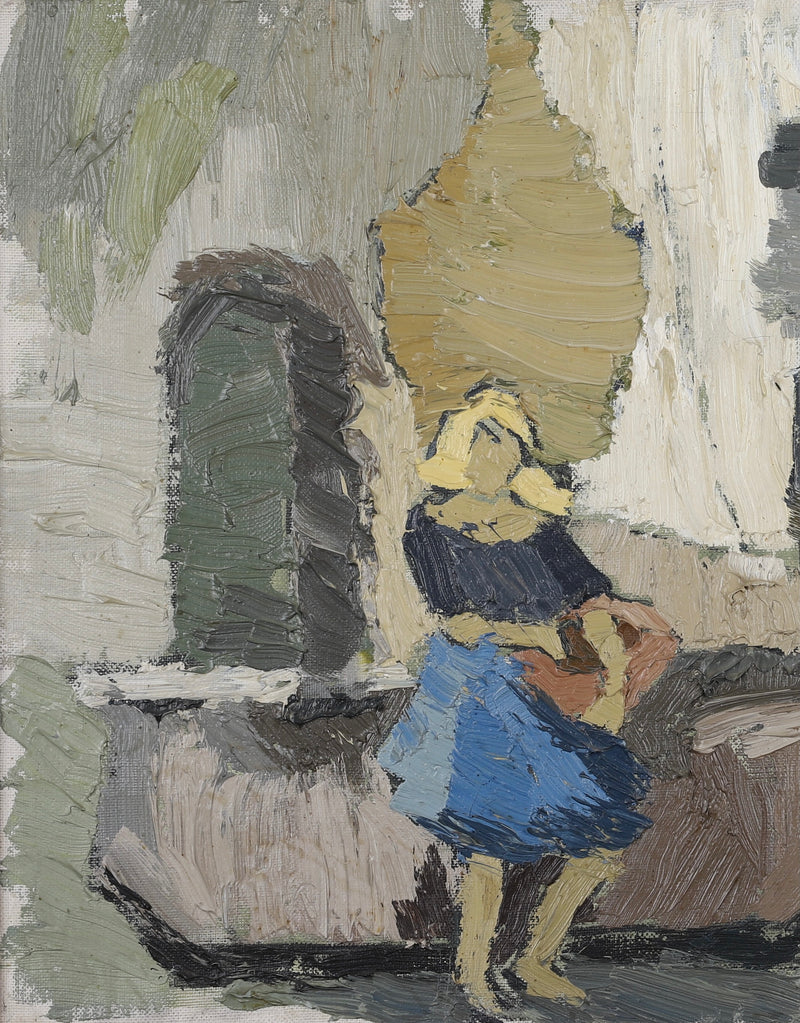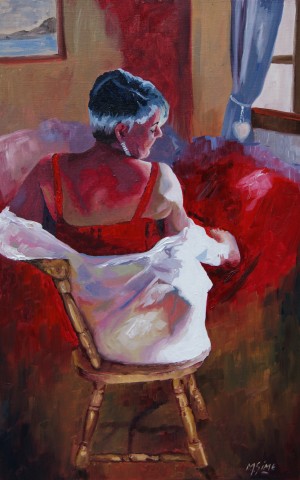Exploring the Depths of Feeling with Figurative Oil Painting Methods
Exploring the Depths of Feeling with Figurative Oil Painting Methods
Blog Article
The Evolution of Metaphorical Oil Paint: Comprehending Its Historical Significance and Modern Interpretations
The advancement of metaphorical oil painting functions as an engaging lens whereby to analyze the interplay between imaginative expression and historic context. From the precise naturalism of the Renaissance to the stirring power of the Baroque, each period has added layers of significance and technique to this classic medium. Contemporary artists, attracting from this rich heritage, are currently reinterpreting the human number in ways that test conventional narratives. As we check out these changes, one have to take into consideration exactly how the discussion between past and present informs not just creative technique however also social reflections in a significantly complex globe.
Beginnings of Figurative Oil Painting
The beginnings of figurative oil paint can be mapped back to the early Renaissance in Europe, especially in the 15th century. This duration marked a significant separation from the level depictions and inflexible kinds characteristic of middle ages art. Artists began to check out naturalism, emphasizing the human figure and its psychological expression. The growth of oil paint enabled higher deepness of shade and detail, improving the realism and vibrancy of their job.

In this transformative age, figures were usually depicted within contextually abundant settings, showcasing not just their physical qualities however also their psychological states. Leaders such as Jan van Eyck and Titian used the tool's convenience, utilizing layering methods to achieve luminosity and appearance. This advancement helped with the portrayal of detailed materials and the subtleties of complexion, adding to the growth of portrait and narrative scenes.
In Addition, the Renaissance emphasis on humanism fostered an appreciation for uniqueness, which consequently influenced musicians to create even more vibrant and relatable numbers - figurative oil painting. Consequently, figurative oil paint became an effective car for narration and emotional involvement, laying the foundation for future artistic movements and designs
Secret Historic Motions
Substantial historical activities have formed the development of figurative oil painting, each adding distinct ideologies and methods that increased the medium's opportunities. The Renaissance noted a zero hour, highlighting realistic look and the human form, with musicians like Leonardo da Vinci and Michelangelo pressing the limits of physiological precision and perspective. Following this, the Baroque period brought dramatic contrasts of light and shadow, exhibited by Caravaggio, that infused spiritual themes with extreme emotionality.
The 19th century introduced Romanticism and Realistic look, where musicians such as Delacroix and Courbet challenged classic perfects, focusing on specific expression and everyday life. The development of Impressionism further revolutionized the medium by stressing the results of light and color, resulting in a departure from conventional depiction.
In the very early 20th century, activities like Expressionism and Cubism redefined figurative paint through abstraction and the expedition of emotional depth. Each of these movements not just reflected the societal modifications of their times but also prepared for modern interpretations. The interaction between these historical motions has actually developed an abundant tapestry of ideologies and styles, affecting contemporary artists in their pursuit of recording the human experience on canvas.
Methods and Products Evolution

Throughout the Baroque duration, methods such as chiaroscuro and sfumato arised, boosting the emotional vibration of figurative make-ups. Artists started to try out lusters and impasto, manipulating structure and brightness. By the 19th century, developments like using pre-mixed paints in tubes transformed ease of access, allowing musicians to repaint en plein air and record the fleeting impacts of light.
The 20th century experienced the introduction of synthetic pigments and tools, which expanded the combination and modified the consistency of oil paints. Additionally, the expedition of brand-new application methods, such as combination knives and brushes of differing stiffness, additional varied artistic expression. Jointly, these innovations show the evolving connection in between materials, techniques, and the creative vision integral in metaphorical oil paint.

Contemporary Analyses
Contemporary analyses of metaphorical oil paint mirror a vibrant discussion in between practice and technology, where musicians test developed standards and check out diverse themes. This evolution manifests in different ways, as modern musicians mix classic methods with contemporary check my reference ideas, usually dealing with social, political, and personal stories.
Many experts attract motivation from historic jobs, yet they instill their items with modern perspectives, utilizing the human type as a lorry for discourse on sex, identity, and society. Artists significantly explore abstraction, distortion, and multimedias, which permits a wider interpretation of the number and its context.
Additionally, the use of vivid color combinations and non-traditional compositions often offers to interfere with typical checking out experiences, provoking critical interaction from audiences. This change in focus expands past appearances; it shows an expanding recognition of the intricacies of human experience in an interconnected globe.
As figurative oil paint remains to evolve, it stays a vital medium for discovering the nuances of modern life, symbolizing both a regard for heritage and a commitment to dynamic thought. The outcome is an abundant tapestry of expression that resonates with the complexities of the contemporary human problem.
Effect on Modern Art
The impact of metaphorical oil paint on modern art is profound, as it has continuously motivated a myriad of artistic motions and techniques throughout the 20th and 21st centuries. From Expressionism to Surrealism and beyond, the exploration of the human number has actually stayed a central theme, enabling artists to communicate intricate feelings and stories. This focus on metaphorical depiction has resulted in a re-examination of standard strategies, causing ingenious approaches that blend realism with abstraction.
Furthermore, contemporary artists have accepted figurative oil painting as a means to attend to political and social problems, using the tool to challenge perceptions of society, gender, and identity. The resurgence of passion in figurative operate in current years shows a hoping for connection in an increasingly digital globe, where human experience and feeling are vital.
Furthermore, the dialogue between metaphorical oil painting and modern-day art appears in the works of musicians such as Kehinde Wiley and Jenny Saville, that make use of historic referrals while instilling their pieces with modern significance. Eventually, figurative oil paint next remains to form and redefine modern creative expression, underscoring its long-lasting relevance in the art world.
Verdict
The evolution of figurative oil paint highlights its historic relevance and adaptability throughout different imaginative motions. From the naturalism of the Renaissance to the emotive expressions of the Baroque and the ingenious approaches of modernity, this tool has consistently transformed. Contemporary analyses mirror dynamic colors and unique make-ups, fostering vital interaction with political and social motifs. Eventually, figurative check my source oil painting stays an important medium for exploring the human experience, resonating profoundly in today's digital landscape.
The evolution of figurative oil painting offers as an engaging lens through which to analyze the interplay in between creative expression and historical context.Significant historical motions have shaped the evolution of figurative oil paint, each adding unique viewpoints and methods that broadened the tool's opportunities.As historic activities formed the trajectory of metaphorical oil paint, the strategies and products used by musicians have additionally gone through considerable transformations. figurative oil painting.The influence of metaphorical oil paint on contemporary art is profound, as it has constantly influenced a myriad of creative motions and practices throughout the 20th and 21st centuries.The evolution of figurative oil painting highlights its historic significance and adaptability across various artistic activities
Report this page